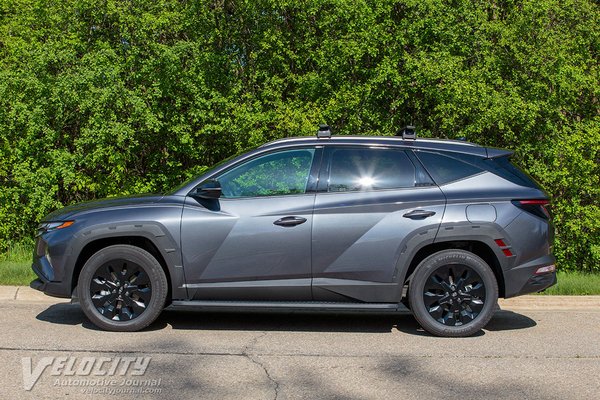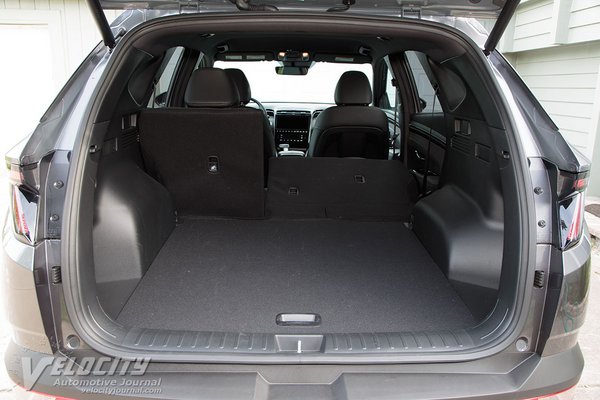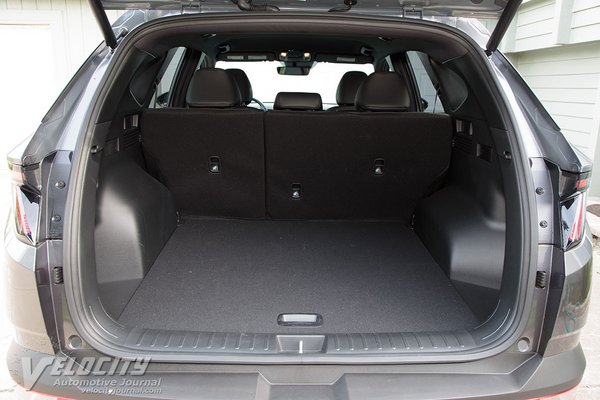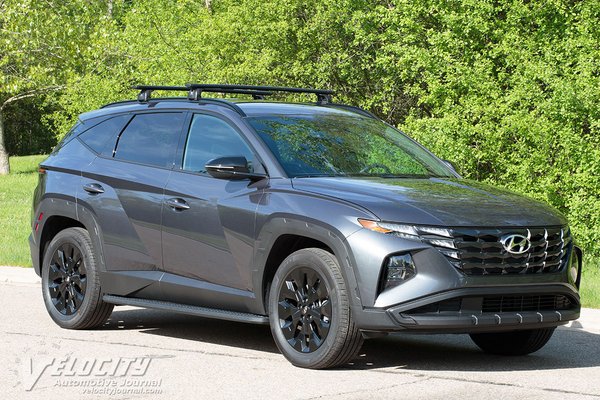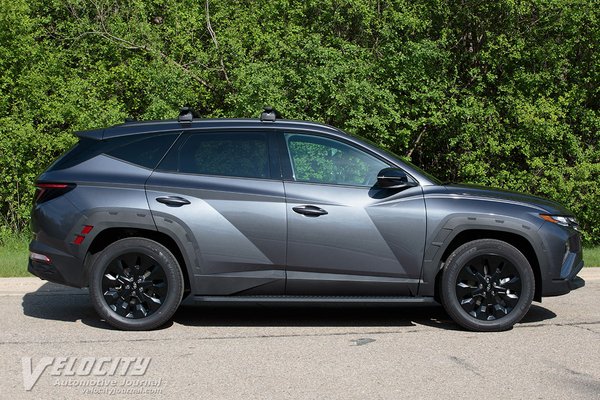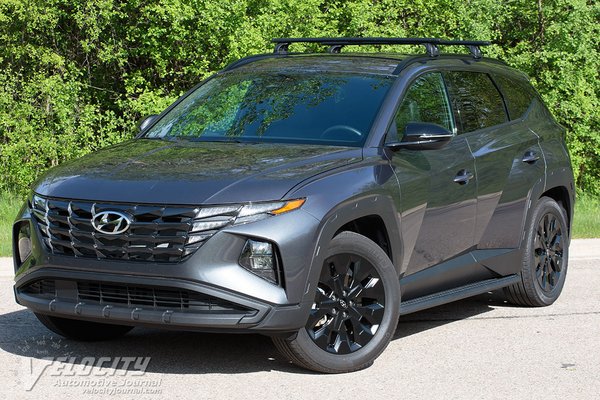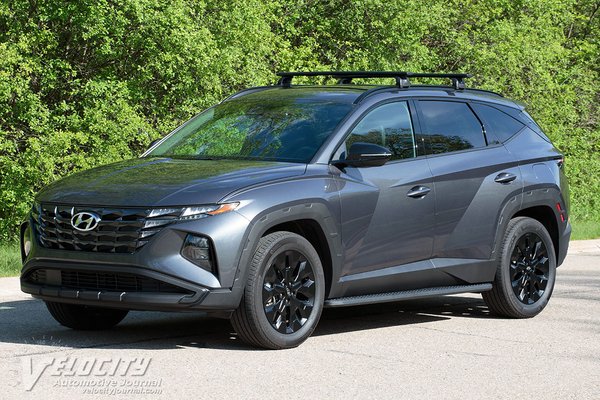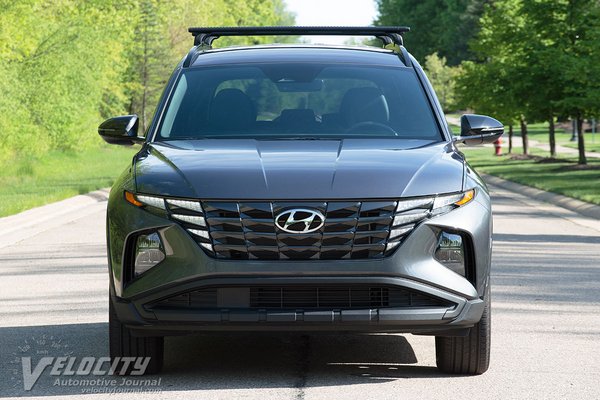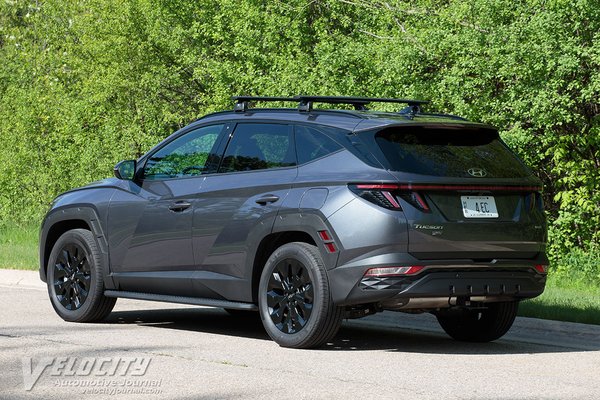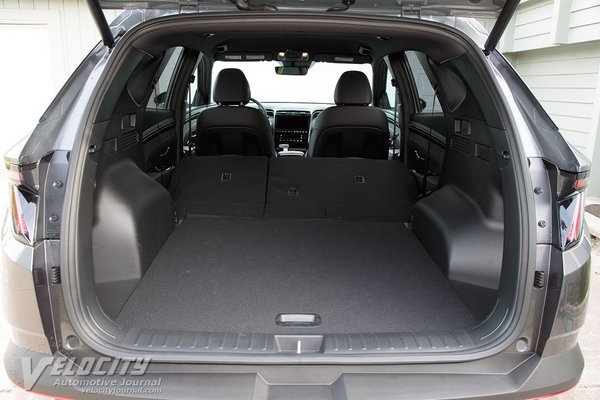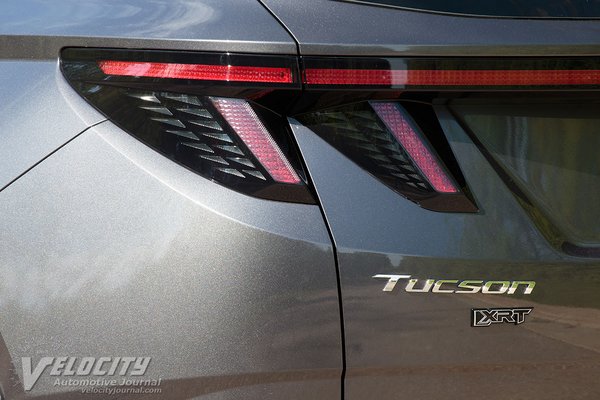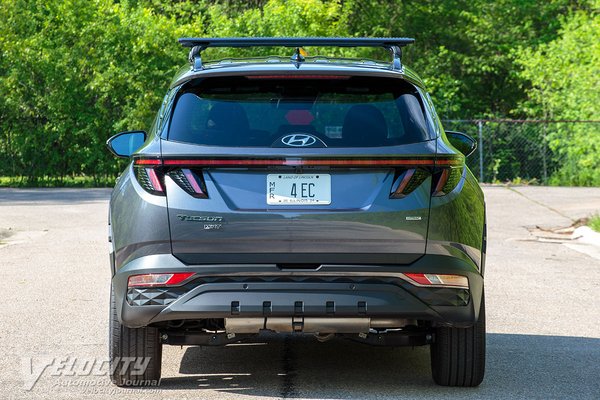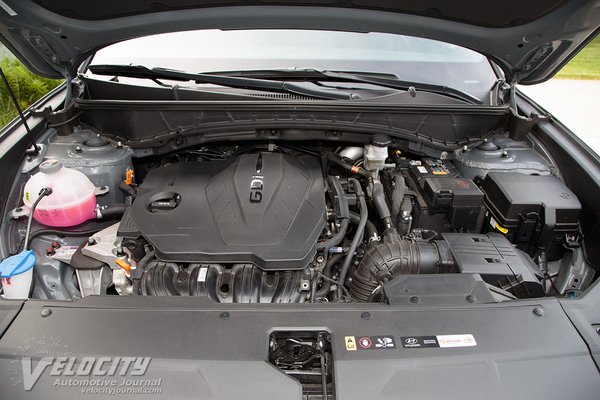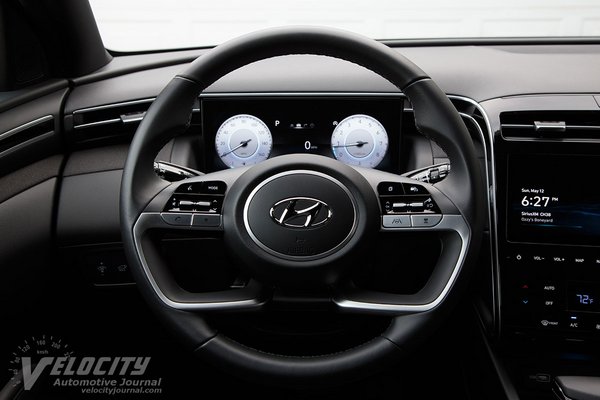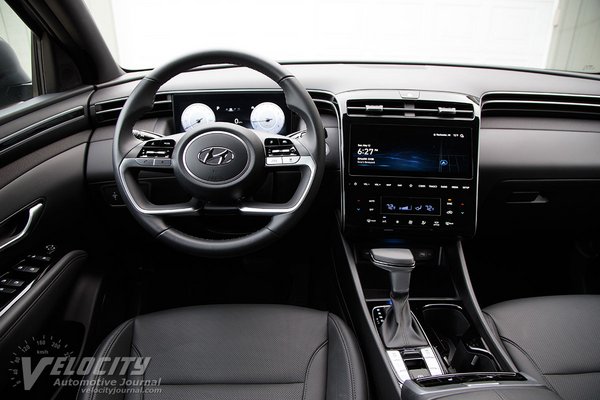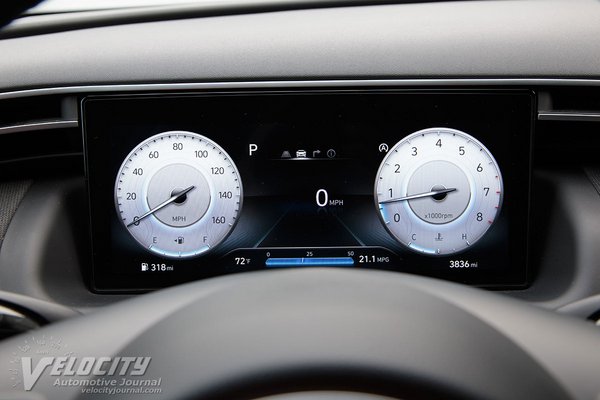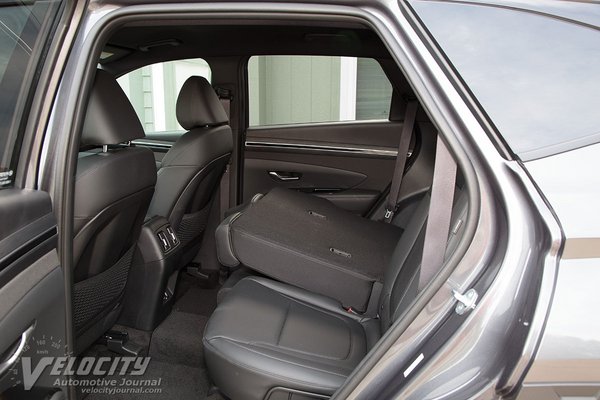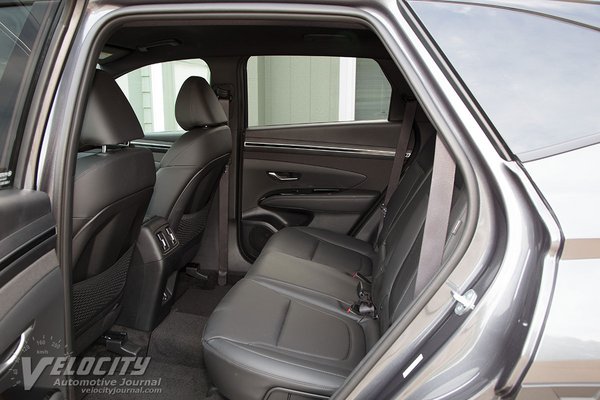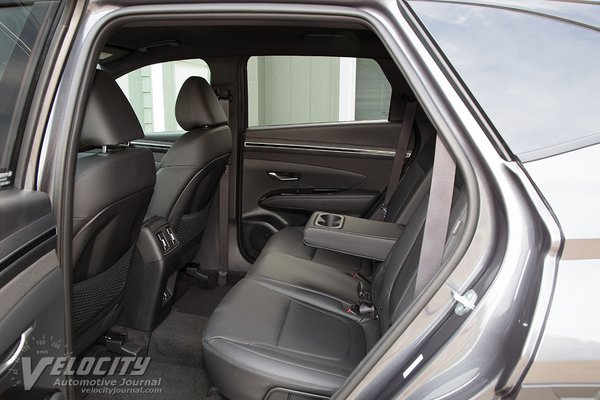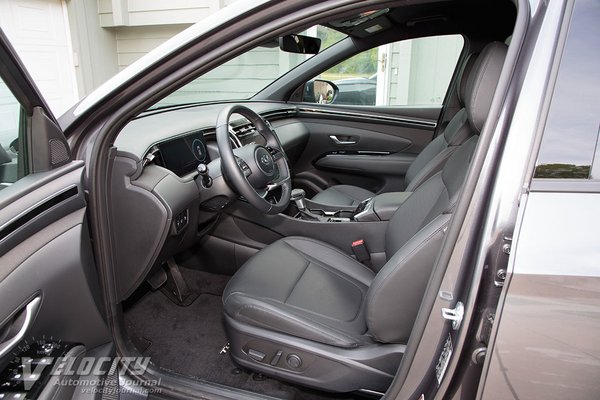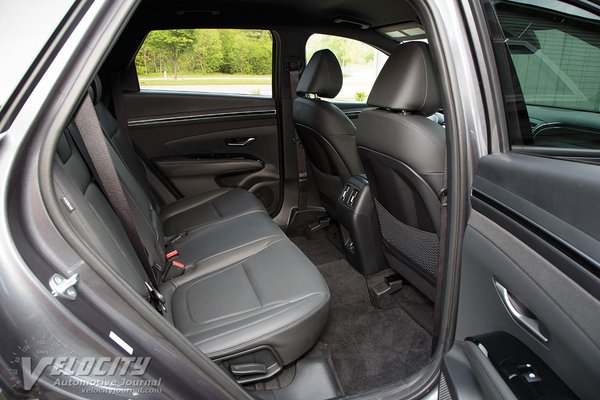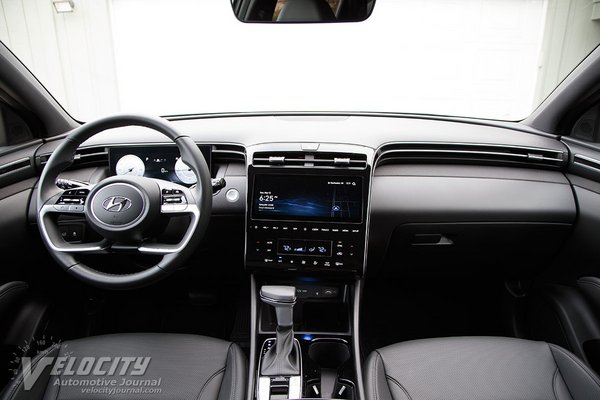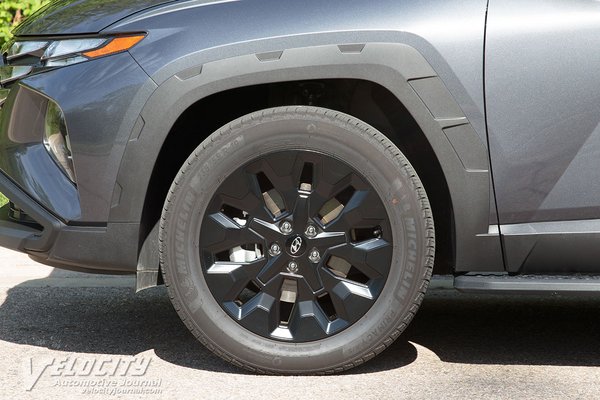2024 Hyundai Tucson XRT AWD
11/03/2024
Shahed Hussain
Hyundai's Tucson compact SUV is in a crowded segment with popular American and Japanese competition. Five gas-powered trim levels are available: SE, SEL, SEL Convenience, XRT and Limited. A hybrid (HEV) and plug-in hybrid (PHEV) are also part of the expanded model range. Pricing for 2024 Tucsons starts at $27,500 (SE FWD) and ranges up to $38,260 (Limited AWD) for the non-hybrid models.
Our tested Tucson XRT AWD ($35,825) had carpeted floor mats ($210) as the only option. Adding the $1,375 freight charge totaled up to $37,410. Significant standard equipment includes 8-way power driver seat, heated front seats, 12.3-in. touchscreen, Android Auto, Apple CarPlay, LED headlights, rearview monitor, 18-in. alloy wheels, and 6-speaker audio system. Active safety technologies include blind spot collision warning, lane keeping assist, smart cruise control and forward collision avoidance assist.
All non-hybrid Tucsons are powered by an all-aluminum and direct-injected 2.5L inline-4 with dual overhead cams, continuously variable valve-timing and variable intake system. Rated at 187-hp @ 6,100 RPM and 178 lb.-ft. @ 4,000 RPM, the 2.5L is coupled to an 8-speed automatic that sends power to the front wheels or the H-TRAC AWD system, as in our test vehicle. EPA fuel consumption ratings are 24/30 MPG (city/hwy.). We only averaged 20-23 MPG in mixed urban and highway driving.
The Tucson's front suspension consists of MacPherson struts and a stabilizer bar; at the rear is a multilink setup with coil springs, dampers, and stabilizer bar. An all-disc brake system has 12.8 in. front rotors and 12.0 in. rear rotors. Tires are 235/55R19 Michelin Primacy A/S mounted on 19-in. alloy wheels. Steering is via a rack-and-pinion system, motor-assisted and geared for 2.41 turns lock-to-lock. Curb weight for the XRT AWD is 3,715 lbs.; the FWD XRT is slightly lighter at 3,571 lbs. Maximum towing capacity with trailer brakes is rated at 2,000 lbs. for all Tucsons.
Hyundai's interior design is mostly uncluttered and visually pleasing. Superb build quality and a general absence of hard plastics reinforce the premium appearance. The leather-wrapped steering wheel is an unusual 4-spoke design that has integrated audio, phone and vehicle safety system controls. We found the larger horizontal spokes too wide to be gripped comfortably, especially for drivers with smaller hands. The thinner, lower spokes are usable for highway driving, but not optimal for emergency maneuvers. A tablet-style configurable electronic cluster displays an analog speedometer and tachometer, plus vehicle status. The gauge color theme varies depending on the powertrain mode selected.
The Tucson's infotainment touchscreen is integrated into the center stack instead of protruding above the dash. Audio, navigation and climate controls are accessible via touch-sensitive buttons below the display. Dual USB ports, a 12V power outlet, and a wireless Qi pad can charge mobile devices. Hyundai replaced the previous pushbutton transmission gear selector with a conventional shift lever. Dual cupholders are located next to shifter.
Cloth and leather trim are available in other Tucsons, but the XRT gets Hyundai's H-Tex perforated leatherette seats. The front seats provide excellent lateral support and comfort, but only the driver's seat has power adjustments. Front headroom is acceptable for occupants up to 6 ft. tall. Rear seat passengers benefit from supportive seats, ample legroom and similar headroom as in front.
As in most Hyundais, three powertrain modes are available: Normal, Smart and Sport. Normal mode enables the engine start/stop (idle stop & go) function that turns off the engine at a stop, and then restarts when the gas pedal is pressed. We noted a slight delay before the powertrain starts up. Both Smart and Sport modes disable the start-stop function, so we preferred these modes during normal driving. The Tucson's all-wheel drive system works seamlessly: no wheelspin or torque steer on dry roads. We didn't experience any rainy weather to test the AWD system's capabilities.
Cruising at 70-80 MPH, the 2.5L/8-speed automatic combination delivers adequate midrange acceleration when lightly loaded, but a few more horsepower would be welcome. Hyundai's efforts to minimize wind, engine and tire noise result in a quiet cabin at highway speeds. Precise and communicative steering contributes to excellent tracking, although minor corrections are required, typical for motor-assisted steering systems. Suspension tuning strikes a near ideal balance of body control and ride comfort. Around curves, the Tucson exhibits moderate understeer and body roll as expected. The all-disc brakes deliver decent stopping power, along with firm pedal feel and progressive actuation.
Hyundai has steadily improved the Tucson to take its place among its American and Japanese competitors. Considering the comprehensive selection of trim levels and a choice of gas or hybrid powertrains, there is a Tucson for most customers. Add in Hyundai's attractive pricing and this SUV becomes a compelling option.

